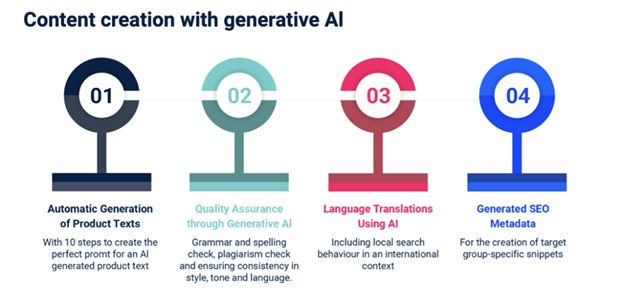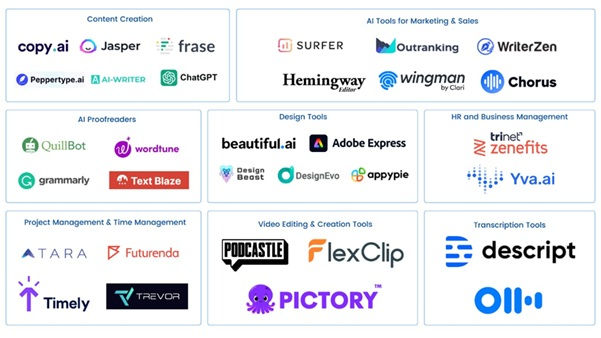THE FUTURE OF AI POWERED WRITING: HOW GPT IS REDEFINING CONTENT CREATION
- Madhuri Pagale
- Mar 20
- 6 min read
Introduction
Artificial intelligence (AI) is no longer something in the future—it's already here, transforming industries and redefining the way we make, consume, and engage with content. Leading the charge in this revolution is GPT (Generative Pre-trained Transformer), a sophisticated AI language model that's changing the world of writing. From writing blog entries and sales copy to coming up with original stories and technical guides, GPT is showing promise as a writer's game-changer, a business saver, and an artist's boon. But how does this reshape the future of content creation? In this post, we're going to walk you through the way GPT is revolutionizing the world of writing, its promise, and the challenges that come with stepping into this brave new world of AI-fueled creativity.

How GPT is Revolutionizing the Art of Writing
Writing has long been a labor of imagination that requires effort, time, and logical thinking. However, with GPT, this is about to change very rapidly. The AI utility is making writing more convenient and quicker in ways previously unimaginable. Here's how:
1. Coming up with Ideas and Brainstorming
One of the most difficult parts of writing may be coming up with new ideas. GPT is able to assist by recommending topics, headings, and even structure in just seconds. Simply enter a couple of words and it will give you lots of ideas to proceed with.
2. Writing the First Draft
GPT is able to generate drafts for articles, essays, reports, and others very fast. Although the content will require some editing, it saves a significant amount of time on the first draft. This is particularly useful for individuals who have to generate a lot of content in a short time.
3. Editing and Proofreading
In addition to writing, GPT can also assist in making your work better by reviewing grammar, sentence structure, and tone. It can provide edits that make your writing more understandable and refined.
4. Overcoming Writer's Block
All writers get stuck at times. GPT can assist by providing alternative ways of phrasing sentences, developing ideas, or even writing new sections to maintain the flow of creativity.
5. Writing in Other Languages
If you are writing in more than one language, GPT can translate into content while preserving the original style and meaning. It can also produce content directly in other languages, allowing it to be more accessible to more people.
6. Adapting to Different Styles
Whether you want a formal report, a blog post, or a fiction piece, GPT can adapt the writing style to suit your purpose. This conserves time and effort in modifying content for varying platforms or audiences.
7. Idea Generation & Research
Authors frequently get bogged down with creative blocks, yet GPT-assisted AI can come up with new ideas, propose popular topics, and even compile summaries of intricate research papers. This enhances brainstorming sessions as efficient and knowledgeable.
8. Drafting & Editing
AI can create well-formatted drafts from a few input cues, assisting authors in getting their work started. AI-supported editing tools also streamline grammar, tone, and readability, making the content polished.
9. SEO & Digital Marketing
AI-driven by GPT is able to SEO-ify content by making suggestions for keywords, enhancing readability, and creating catchy meta descriptions. This causes the content to be ranked higher on search results, which boosts traffic.
By covering the time-consuming aspects of writing, GPT allows writers to concentrate more on creativity, narration, and planning—while leaving the AI to do the rest.
How AI Creates New Content
AI can write completely new content, but how does it actually do it? Let’s break it down into simple steps:
1. Learning from a Lot of Text
AI models like GPT learn by reading tons of books, articles, and websites. This helps them understand grammar, sentence structure, and different writing styles.
2. Finding Patterns
When AI sees enough text, it starts recognizing patterns. So, when you give it a prompt, it predicts what words should come next to make a meaningful sentence.
3. Mixing Ideas Creatively
AI doesn’t just copy text—it mixes ideas in new ways. For example, if you ask for a story about a future city, AI might combine knowledge from science fiction, architecture, and culture to create something unique.
4. Adapting to Different Styles
AI can change the way it writes based on what you ask for. Need a serious business report? It will write formally. Want a fun social media post? It will make it playful.
5. Learning and Improving
The more people use AI and correct its mistakes, the better it gets. With constant updates and feedback, it keeps improving over time.

Pros and Cons of AI Writing
AI writing has numerous advantages, but there are some disadvantages as well. Let's explore both:
Advantages:
Quick and Efficient
AI can produce content within minutes, not hours. This makes it easier for businesses and writers to meet deadlines early and generate more content within less time.
Cost-Effective
Businesses can save money as they use AI rather than employing huge groups of writers. This is particularly useful for startups and small companies.
Increases Creativity
AI can make recommendations for new ideas, assist with writer's block, and provide creative directions for stories, blogs, and marketing materials.
Improved Grammar and Clarity
AI software corrects spelling, grammar, and sentence construction, creating content that is professional and readable. It can benefit non-native speakers and others who need their writing improved.
Challenges:
Fails Human Emotion
Computer-generated content is sometimes wooden and does not capture the personal emotions that make articles readable and connective.
Misinformation Risk
Computers aren't perfect with facts. Without strict verification, they can distribute fake or misleading data.
Not Always Original
Because AI is trained on current data, its content may at times appear repetitive or too close to other sources, and originality concerns are raised.
Ethical Concerns
AI writing raises concerns about job loss, false content, and abuse (such as deepfake articles or propaganda). It's essential to use it responsibly.
One of the Best Example of generative AI for content creation
1. How canva uses generative AI for content creation:
Canva integrates AI-powered tools to simplify content creation, making design faster and more accessible.

Here’s how:
Magic Design – Instantly generates custom templates based on uploaded content. Magic Write – AI-powered copywriting for blog posts, captions, and marketing text. AI Image Generator – Converts text prompts into unique visuals. AI Video Editing – Automated video creation, trimming, and background removal. Magic Eraser & Edit – Removes objects and edits images seamlessly. Branding & Customization – AI applies consistent colors, fonts, and styles. AI Translations – Instantly converts text into multiple languages.
Some of the famous ai tools for content creation

Conclusion:
The advent of artificial intelligence writing tools like GPT has revolutionized the content creation process at its core, making it more efficient and accessible to unprecedented heights. The tools have eased the creative process, including multiple functions ranging from ideation and editing to search engine optimization and voice-based writing (for example, Alexa), thus enabling businesses, marketers, and writers to focus on creating and executing innovative strategies optimally.
However, with AI comes unparalleled efficiency, which also has a flip side. AI-generated content lacks human touch, creativity, and empathetic comprehension only provided by humans. Additionally, concerns of ethical kinds such as job displacement and spreading misinformation must be addressed with utmost care with the growing application of AI in content creation.
Finally, artificial intelligence should be considered an empowering augmentative tool, and not a replacement for human imagination. The future is in the synergy of human and AI, where the machine does the repetitive, mechanical work and human does the strategic, creative, and emotional work of content creation. With proper utilization of AI, it is possible to bring in a newage of content creation where the best of both worlds is combined—efficiency and authenticity—thus bringing innovation and growth to the digital world.
References:
1. OpenAI. (2023). GPT-4 Technical Report. OpenAI.
2. Canva. (2023). Canva AI Tools: Magic Design, Magic Write, and More. Canva Blog
3. Google AI Blog. (2023). Generative AI: A New Era of Creativity.
4. Forbes. (2023). How AI is Revolutionizing Content Creation. Forbes Technology Council.
Click me for more information about AI powered writing👇
Which content creation tool you use the most.
Canva
Adobe Express
Cap Cut
Pexels
Blog By :
Anushree Narkhede - 123B1E174
Samruddhi Nimbalkar - 123B1E176
Ishani Lohote - 123B1E172


good work
Informative!
Great
Fabulous work